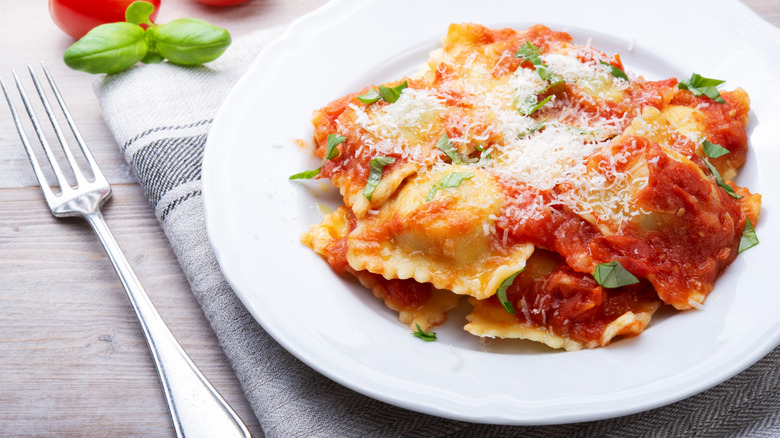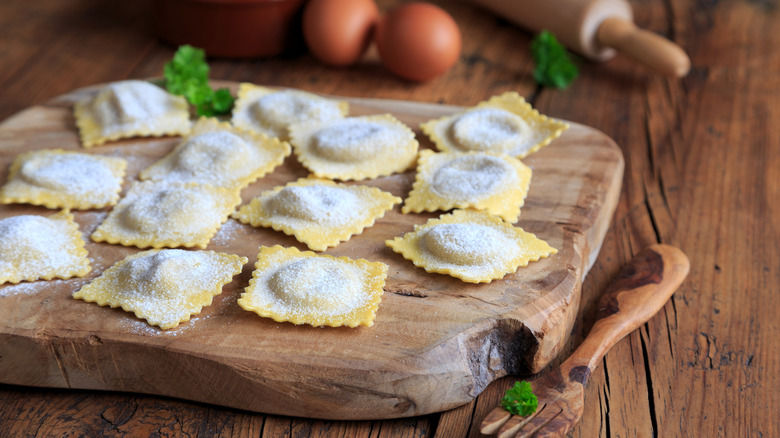The Foolproof Way To Tell When Ravioli Are Cooked
Ravioli are first-round contenders when considering the most beloved Italian dishes. The compact bundles of pasta, filling, and sauce strike a just-right balance of flavors and textures in each delectable bite. That's why it's so disappointing when ravioli is overcooked and mushy, or the pasta is still raw from not boiling long enough. Recipe developer and Pinch and Swirl food blogger, Marissa Stevens, spoke to The Takeout about how to tell when your ravioli are perfectly cooked.
"Lift one gently with a slotted spoon and press the edge with your fingers or the back of a spoon," she explained to us. "If it still feels stiff or doughy, it's not quite ready. The pasta should feel just tender and have a little give." She continued, "If you're still unsure, you can bite a corner of the edge to check the texture." It should be al dente, with a little resistance to it. When the pasta is underdone, Stevens said, "It tastes starchy and slightly chalky, especially in the center. Texture-wise, it feels tight or overly firm when you bite in — like it hasn't quite opened up yet."
What about the rule that ravioli are ready once they float? Stevens explained: "Floating means the filling is warming and releasing steam, but it doesn't guarantee the pasta is fully cooked. I use it as a signal to start checking, not a final verdict." Cooking time will vary depending on whether the ravioli are fresh or frozen, and their size. The thickness of the dough (There is an ideal thinness for homemade ravioli dough) also plays a role.
More tips for the best ravioli every time
There are a few more tips for cooking up ravioli that would make an Italian nonna proud. Use a large pot filled with water that's been salted generously to give the ravioli room to bob around. For the same reason, cook your ravioli in batches if you're making more than a couple of servings.
You want to keep the pasta from breaking open as it cooks. To avoid a ravioli sealing mistake, make sure to remove any extra air from the pockets, then handle the ravioli carefully, including putting them in the water and stirring. Using a wooden spoon is safest, as the narrower, harder edge of a metal spoon could tear the pasta. As a bonus, a wooden spoon can prevent the water from boiling over. Keep the water at a gentle boil so the ravioli don't crash around as they would in a rolling boil. Instead of dumping the ravioli and all the water into a colander, use a slotted spoon or skimmer to pull them out of the pot. Finally, use a light touch when you stir the cooked ravioli with sauce.
Frozen ravioli will take a little longer to cook. Wait to take them out of the freezer until the water reaches a boil. If you thaw them first, the pasta will get too soft from the liquid that forms as it defrosts. Finally, don't break apart ravioli that are frozen together, which could tear the pasta. They'll detach as they cook, allowing you to enjoy a plate of beautiful, pillowy ravioli in no time at all.

